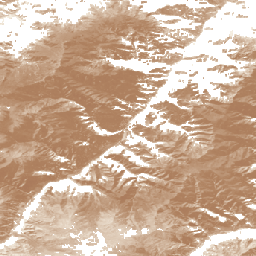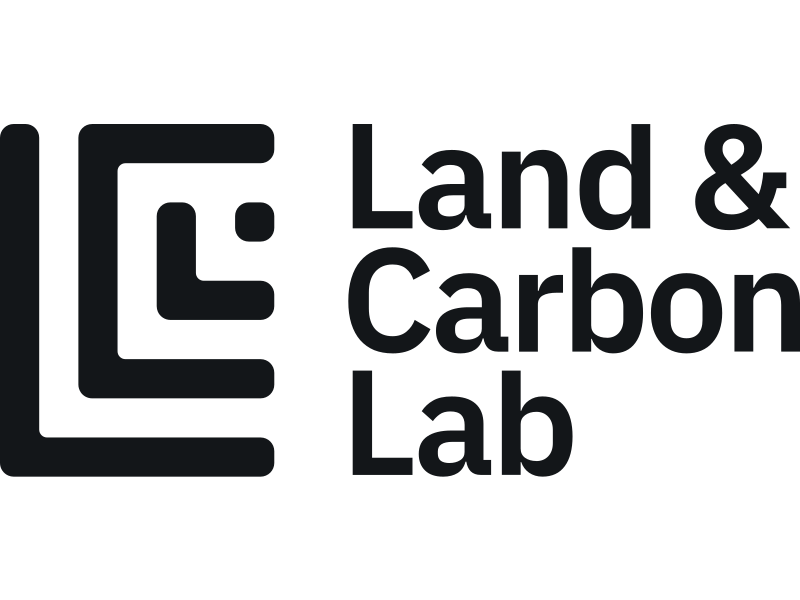
- ক্যাটালগের মালিক
- গ্লোবাল চারণভূমি ওয়াচ
- ডেটাসেট উপলব্ধতা
- 2000-01-01T00:00:00Z–2023-01-01T00:00:00Z
- ডেটাসেট প্রদানকারী
- ভূমি এবং কার্বন ল্যাব গ্লোবাল চারণভূমি ওয়াচ
- যোগাযোগ
- ভূমি ও কার্বন ল্যাব
- ক্যাডেন্স
- 1 বছর
- ট্যাগ
বর্ণনা
এই ডেটাসেটটি 30-মি স্থানিক রেজোলিউশনে 2000 থেকে 2022 পর্যন্ত প্রাকৃতিক/আধা-প্রাকৃতিক তৃণভূমির বিশ্বব্যাপী বার্ষিক সম্ভাব্যতার মানচিত্র সরবরাহ করে। ল্যান্ড অ্যান্ড কার্বন ল্যাব গ্লোবাল পাশ্চার ওয়াচ উদ্যোগের দ্বারা উত্পাদিত, ম্যাপ করা তৃণভূমির সীমার মধ্যে যেকোন ভূমি আচ্ছাদনের ধরন অন্তর্ভুক্ত, যেখানে কমপক্ষে 30% শুকনো বা ভেজা নিম্ন গাছপালা রয়েছে, ঘাস এবং ফরব দ্বারা প্রভাবিত (3 মিটারের কম) এবং একটি:
- সর্বাধিক 50% গাছের ছাউনি কভার (5 মিটারের বেশি),
- সর্বাধিক 70% অন্যান্য কাঠের গাছপালা (স্ক্রাব এবং খোলা গুল্মভূমি), এবং
- শস্যভূমি এবং অন্যান্য গাছপালা মোজাইক ল্যান্ডস্কেপে সর্বাধিক 50% সক্রিয় শস্যভূমি কভার।
তৃণভূমির ব্যাপ্তি দুটি শ্রেণীতে বিভক্ত: - চাষকৃত তৃণভূমি : এমন এলাকা যেখানে ঘাস এবং অন্যান্য চারণ উদ্ভিদ ইচ্ছাকৃতভাবে রোপণ করা হয়েছে এবং পরিচালনা করা হয়েছে, সেইসাথে স্থানীয় তৃণভূমি-জাতীয় গাছপালাগুলির এলাকা যেখানে তারা স্পষ্টভাবে মানব-নির্দেশিত ব্যবহারের জন্য সক্রিয় এবং ভারী ব্যবস্থাপনা প্রদর্শন করে, যেমন পশুদের নির্দেশিত চারণ। - প্রাকৃতিক/আধা-প্রাকৃতিক তৃণভূমি : তুলনামূলকভাবে নিরবচ্ছিন্ন স্থানীয় তৃণভূমি/স্বল্প-উচ্চতার গাছপালা, যেমন স্টেপস এবং টুন্ড্রা, সেইসাথে এমন এলাকা যা অতীতে বিভিন্ন মাত্রার মানুষের কার্যকলাপের অভিজ্ঞতা লাভ করেছে, যাতে ঐতিহাসিক ভূমি ব্যবহার এবং প্রাকৃতিক প্রক্রিয়ার কারণে স্থানীয় এবং প্রবর্তিত প্রজাতির মিশ্রণ থাকতে পারে। সাধারণভাবে, তারা বৈচিত্র্যময় উদ্ভিদের প্রাকৃতিক-সুদর্শন নিদর্শন প্রদর্শন করে এবং পুরো আড়াআড়ি জুড়ে স্পষ্টভাবে নির্দেশিত জলবিদ্যুৎ সম্পর্ক।
বাস্তবায়িত পদ্ধতিতে বিবেচনা করা হয়েছে GLAD Landsat ARD-2 চিত্রগুলি (ক্লাউড-মুক্ত দ্বি-মাসিক সমষ্টিতে প্রক্রিয়া করা হয়েছে, দেখুন কনসোলি এট আল, 2024 ), জলবায়ু, ল্যান্ডফর্ম এবং প্রক্সিমিটি কোভেরিয়েটস, স্প্যাটিওটেম্পোরাল মেশিন লার্নিং (প্রতি-শ্রেণি র্যান্ডম ফরেস্ট) এবং উচ্চ 3 মিলিয়নের বেশি নমুনা 3 মিলিয়নের বেশি নমুনা। রেজোলিউশন চিত্র)। কাস্টম সম্ভাব্যতা থ্রেশহোল্ড (পাঁচ-গুণ স্থানিক ক্রস-ভ্যালিডেশন এবং সুষম নির্ভুলতা এবং প্রত্যাহার মানের উপর ভিত্তি করে) প্রভাবশালী শ্রেণীর মানচিত্র, যথাক্রমে 0.32 এবং 0.42 চাষকৃত এবং প্রাকৃতিক/আধা-প্রাকৃতিক তৃণভূমি সম্ভাব্যতা থ্রেশহোল্ডের জন্য ব্যবহার করা হয়েছিল।
সীমাবদ্ধতা: দক্ষিণ-পূর্ব আফ্রিকায় (জিম্বাবুয়ে এবং মোজাম্বিক) এবং পূর্ব অস্ট্রেলিয়ায় (মুলগা ইকোরিজিয়নের ঝোপঝাড় এবং বনভূমি) তৃণভূমির পরিমাণ আংশিকভাবে অনুমান করা হয়নি। উত্তর আফ্রিকা, আরব উপদ্বীপ, পশ্চিম অস্ট্রেলিয়া, নিউজিল্যান্ড, বলিভিয়ার কেন্দ্র এবং মাতো গ্রোসো রাজ্য (ব্রাজিল) এর কিছু অংশে শস্যভূমিকে তৃণভূমি হিসাবে ভুল শ্রেণিবদ্ধ করা হয়েছে। ল্যান্ডস্যাট 7 এসএলসি ব্যর্থতার কারণে, তৃণভূমির সম্ভাব্যতার নিয়মিত স্ট্রিপগুলি পার্সেল-লেভেলে দৃশ্যমান হয়, বিশেষ করে 2012 সালে। মোটা রেজোলিউশন স্তরের ব্যবহার (অ্যাক্সেসিবিলিটি ম্যাপ এবং MODIS পণ্য) বক্ররেখার ম্যাক্রোস্কোপিক ত্রুটির সূচনা করেছে (ডাউনস্কেলিং কৌশলের কারণে), সাউথের সাউথের সাউথ স্ট্র্যাটেজির উপর ভিত্তি করে। অ্যাঙ্গোলা এবং আফ্রিকার সাহেল অঞ্চলে। ব্যবহারকারীদের সীমাবদ্ধতা এবং পরিচিত সমস্যা সম্পর্কে সচেতন হতে হবে; এই প্রাথমিক ভবিষ্যদ্বাণী পর্যায়ে মানচিত্রের যথাযথ ব্যবহার নিশ্চিত করার জন্য সেগুলিকে সাবধানে বিবেচনা করা। GPW সক্রিয়ভাবে কাজ করছে জিও-উইকি প্ল্যাটফর্মের মাধ্যমে পদ্ধতিগত প্রতিক্রিয়া সংগ্রহ করতে, বর্তমান সংস্করণকে যাচাই করতে এবং ডেটাসেটের ভবিষ্যত সংস্করণগুলিকে উন্নত করতে।
আরও তথ্যের জন্য প্যারেন্ট এট দেখুন। al, 2024 , Zenodo এবং Global Pasture Watch GitHub সাইট
ব্যান্ড
ব্যান্ড
| নাম | মিন | সর্বোচ্চ | পিক্সেল সাইজ | বর্ণনা |
|---|---|---|---|---|
probability | 0 | 100 | 30 মিটার | এলোমেলো বনের মাধ্যমে প্রাপ্ত প্রাকৃতিক/আধা-প্রাকৃতিক তৃণভূমির সম্ভাব্যতার মান। |
ইমেজ বৈশিষ্ট্য
ইমেজ বৈশিষ্ট্য
| নাম | টাইপ | বর্ণনা |
|---|---|---|
| সংস্করণ | আইএনটি | পণ্য সংস্করণ |
ব্যবহারের শর্তাবলী
ব্যবহারের শর্তাবলী
উদ্ধৃতি
Parente, L., Sloat, L., Mesquita, V., et al. (2024) গ্লোবাল পাশ্চার ওয়াচ - 30-মি স্থানিক রেজোলিউশনে বার্ষিক তৃণভূমির শ্রেণী এবং ব্যাপ্তির মানচিত্র (2000-2022) (সংস্করণ v1) [ডেটা সেট]। জেনোডো ডোই:https://doi.org/10.5281/zenodo.13890401
Parente, L., Sloat, L., Mesquita, V., et al. (2024)। স্প্যাটিওটেম্পোরাল মেশিন লার্নিং, বৈজ্ঞানিক ডেটার উপর ভিত্তি করে বৈশ্বিক তৃণভূমি শ্রেণী এবং ব্যাপ্তির (2000-2022) বার্ষিক 30-মিটার মানচিত্র। doi: http://doi.org/10.1038/s41597-024-04139-6
DOIs
আর্থ ইঞ্জিন দিয়ে অন্বেষণ করুন
কোড এডিটর (জাভাস্ক্রিপ্ট)
Map.setCenter(63.72366666, 38.30182604, 4); var nat_semi_grassland = ee.ImageCollection( "projects/global-pasture-watch/assets/ggc-30m/v1/nat-semi-grassland_p" ) var min_prob = 42 // Probability threshold var visParams = {min: 15, max: 85, palette: 'f7f1e5,af8260,803d3b,322c2b'} var nat_semi_grassland_2022 = nat_semi_grassland.filterDate('2022-01-01', '2023-01-01').first(); Map.addLayer( nat_semi_grassland_2022.mask(nat_semi_grassland_2022.gte(min_prob)), visParams, 'Natural/Semi-natural grassland prob. (2022)' ); var nat_semi_grassland_2000 = nat_semi_grassland.filterDate('2000-01-01', '2001-01-01').first(); Map.addLayer( nat_semi_grassland_2000.mask(nat_semi_grassland_2000.gte(min_prob)), visParams, 'Natural/Semi-natural grassland prob. (2000)' );

